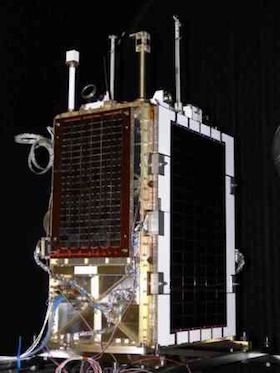 Barring anything unforeseen, SumbandilaSat, an SA-built satellite, will be launched into space on Tuesday aboard a Russian Soyuz rocket from Baikonur in Kazakhstan.
Barring anything unforeseen, SumbandilaSat, an SA-built satellite, will be launched into space on Tuesday aboard a Russian Soyuz rocket from Baikonur in Kazakhstan.
The R26m, 81kg micro satellite, which is about 1m x 0,5m in size, is the result of a three-year satellite development programme commissioned by the department of science & technology in 2005, and carried out by Stellenbosch University’s engineering faculty.
This is the same organisation that developed SunSat, which was launched in 1999.
SumbandilaSat will assist in managing disasters (floods and fires), food security (crop yield estimation), health (prediction of outbreaks), safety and security, water resources and energy security.
The satellite, pictured, will orbit between 500km and 600km above the earth. Carrying high resolution cameras, it will produce images to be used for agriculture, mapping of infrastructure and land use, population measurement and the monitoring of dam levels. The information will be streamed to the satellite applications centre at Hartbeeshoek, near Pretoria.
It’s not SA’s first attempt to get the satellite launched. “Previous challenges specific to SumbandilaSat included difficulty in receiving a Russian government decree for the launch, the rescheduling of a manned mission, and the unreadiness of the primary payload, the Meteor M,” says Humbulani Mudau, project manager at the department of science & technology.
Science & technology minister Naledi Pandor is in Kazakhstan for the launch. — Staff reporter, TechCentral



